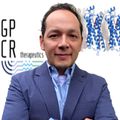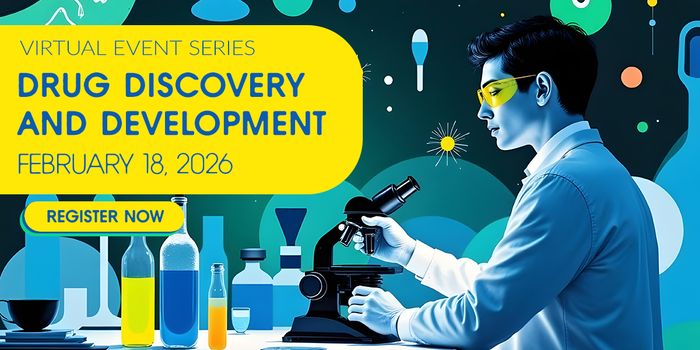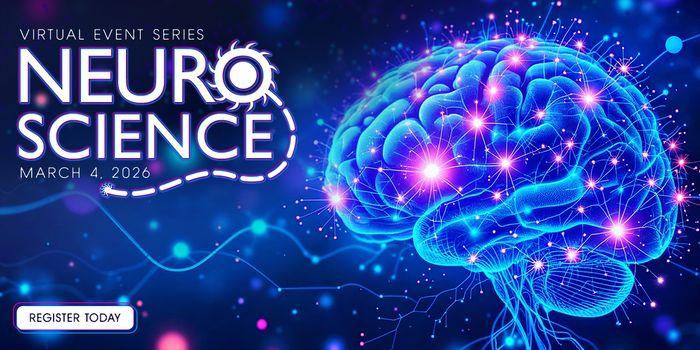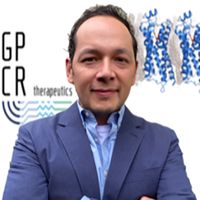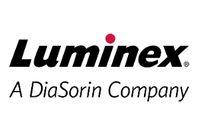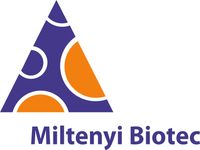An Associate Professor with Midwestern University, Dr. Annette Gilchrist has a PhD in Immunology from the University of Connecticut Health Center and a MS in Biochemistry from the University of Connecticut. Previously, she was with Cue Biotech and Caden Biosciences, companies she ...
See moreProgram Committee Share
-
Annette Gilchrist
-
Matthew Flegal
Matt entered the research field over 20 years ago as a lab animal technician at the TSI/Mason contract research facility. He has worked at both contract facilities such as TSI and OREAD Biosafety as well in industry at Pharmacia, Pfizer, and Sanofi-Aventis. During that period he ...
See more -
Martin Shaw
Between 1994-2015 he worked at EKF Diagnostics in Wales (formerly Argutus Medical) where he introduced and promoted a wide range of novel kidney and liver tests, including important biomarkers that are now being evaluated by the IMI (Innovative Medicines Initiative) and FDA as ...
See more -
Matthew Shipton
Over the past 16 years, Mr. Shipton has amassed deep domain expertise in cell-based products and services. Currently serving as President of Novabiosis, Inc. Mr. Shipton brings a skill for implementing sales-driven business strategies, an extensive track record of meeting and ...
See more
Drug Discovery & Development Virtual Event Series 2021


Labroots and the Drug Discovery planning committee are pleased to announce the 4th annual event in the Drug Discovery & Development Virtual Event Series. Labroots will host this online-only event on February 24, 2021. The Drug Discovery planning committee will carefully plan and select speakers that best represent the key challenges, opportunities, and issues in the current landscape. These industry leaders will discuss the advancements, challenges and successes of discovery and develop new medications and therapies.
- New Practices in Early Phase Drug Discovery
- Novel Advancements to Clinical Development
- Health Equality and Genetic Diversity in Clinical Trials
- Modern Approaches to Discovery, Preclinical, and Clinical Lab Operations in the COVID-19 Age
- Innovative Biomarkers in Drug Development
Our virtual conference allows you to participate in a global setting with no travel or cost to you. The event will remain open for 2 years from the date of the live event, and the webinars will be available for unlimited on-demand viewing. This virtual conference also offers increased reach for the global drug discovery community with a high degree of interaction through live-streaming video and chat sessions.
Equipped with gamification and point system, you can now move around the entire event, earning points for a chance to win one of Labroots' most popular T-shirts.
Call for Posters — Virtual poster sessions offer the opportunity to present data to a global audience via a PDF poster and video summary, and discuss results with interested colleagues through email. Plan now to have your poster included in the 2021 Drug Discovery & Development Virtual Event. Submission is free. Submit your abstract here.

Continuing Education
LabRoots is approved as a provider of continuing education programs in the clinical laboratory sciences by the ASCLS P.A.C.E. ® Program. By attending this event, you can earn 1 Continuing Education credit per presentation for a maximum of 30 credits.
Use #LRdrug to follow the conversation!
Agenda Share
-
FEB 24, 2021 3:00 PM PST
PROTACs: A Chemistry Journey of Protein Degraders
-
FEB 24, 2021 3:00 PM PST
Supporting Biomarker Discovery One Cell at a Time - Single cell analysis solutions that drive results and insights
Leif Schauser, PhDDirector, Global Product Management, QIAGENJoseph Pearson, PhDGlobal Product Manger, QIAGEN Digital Insights -
FEB 24, 2021 1:30 PM PST
Roundtable Panel Presentation: Recent Trends in Screening GPCRs
Yamina A. Berchiche, PhDFounder, Dr. GPCRAjay Yekkirala, PhDCo-Founder & CSO, Blue TherapeuticsAarti KawatkarSr. Scientist, Chemical Biology and Proteomics group, A...Juan José Fung, PhDPrincipal Scientist, GPCR TherapeuticsProfessor Kevin Pfleger, MA, PhD, FBPhSDirector, Biomedical and Health Innovation, The Univers...Annette Gilchrist, PhDAssociate-Professor, Pharmaceutical Sciences, Midwester... -
FEB 24, 2021 12:00 PM PST
Deep Mechanistic profiling of immune oncology drug combinations in cancer patients with CIVO intratumoral micro-dosing and NanoString's GeoMx® Digital Spatial Profiler
Sarah Warren, PhDSr Director of Translational Science, NanoString Techno...Jason FrazierDirector of Scientific Operations, Presage Biosciences -
FEB 24, 2021 12:00 PM PST
Speed up your drug discovery with ready-to-use stable cell lines
-
FEB 24, 2021 10:30 AM PST
The New xMAP® INTELLIFLEX: Technology You Trust. Versatility You Want
Sherry A. Dunbar, PhD, MBASenior Director, Global Scientific AffairsJosh Jenkins, MSSales Development Manager, Licensed Technologies Group,... -
FEB 24, 2021 10:30 AM PST
The Visiopharm Platform: Flexible tools to solve real-world problems
Dave Mason, PhDTechnical Sales Specialist, VisiopharmKeith Bowers, PhDSenior Business Development Manager, OracleBio -
FEB 24, 2021 9:00 AM PST
Keynote Panel Presentation: Biomarker assays - bioanalytical meets CLIA
Andrew Roche, PhDSenior Director, Scientific Affairs, ICON Laboratory Se...Roger Hayes, PhDVice President, Bioanalytical Services, ICON Laboratory... -
FEB 24, 2021 7:30 AM PST
Keynote Presentation: The biomarker to companion diagnostic continuum: a road map for the delivery of precision medicine
-
FEB 24, 2021 6:00 AM PST
Introducing GenScript's DNA-Encoded Chemical Library Kit - GenDECL
-
COVID's Impact on Life Sciences Recruiting
-
Evolution of a Platform-Based Non-Clinical Safety Assessment Approach for Vaccines
-
Nonclinical COVID-19 Vaccine Development During a Pandemic
Cynthia Rohde, PhD, DABT
Associate Research Fellow, Drug Safety Research and Development, Pfizer, Inc.BIOGRAPHY -
Preclinical evaluation of novel OT-analogs for the potential treatment of social behavioral deficits
-
The Comprehensive A.I.-Driven Genomic Landscape for ALS - Implications for Drug Discovery and Development
- New Practices in Early Phase Drug Discovery
-
Preclinical evaluation of novel OT-analogs for the potential treatment of social behavioral deficits
-
FEB 24, 2021 10:30 AM PST
The Visiopharm Platform: Flexible tools to solve real-world problems
Dave Mason, PhDTechnical Sales Specialist, VisiopharmKeith Bowers, PhDSenior Business Development Manager, OracleBio -
FEB 24, 2021 12:00 PM PST
Speed up your drug discovery with ready-to-use stable cell lines
-
FEB 24, 2021 12:00 PM PST
Deep Mechanistic profiling of immune oncology drug combinations in cancer patients with CIVO intratumoral micro-dosing and NanoString's GeoMx® Digital Spatial Profiler
Sarah Warren, PhDSr Director of Translational Science, NanoString Techno...Jason FrazierDirector of Scientific Operations, Presage Biosciences -
FEB 24, 2021 1:30 PM PST
Roundtable Panel Presentation: Recent Trends in Screening GPCRs
Yamina A. Berchiche, PhDFounder, Dr. GPCRAjay Yekkirala, PhDCo-Founder & CSO, Blue TherapeuticsAarti KawatkarSr. Scientist, Chemical Biology and Proteomics group, A...Juan José Fung, PhDPrincipal Scientist, GPCR TherapeuticsProfessor Kevin Pfleger, MA, PhD, FBPhSDirector, Biomedical and Health Innovation, The Univers...Annette Gilchrist, PhDAssociate-Professor, Pharmaceutical Sciences, Midwester... -
FEB 24, 2021 3:00 PM PST
PROTACs: A Chemistry Journey of Protein Degraders
- Novel Advancements to Clinical Development
-
The Comprehensive A.I.-Driven Genomic Landscape for ALS - Implications for Drug Discovery and Development
-
Evolution of a Platform-Based Non-Clinical Safety Assessment Approach for Vaccines
- Modern Approaches to Discovery, Preclinical and Clinical Lab Operations in COVID-19 Age
-
COVID's Impact on Life Sciences Recruiting
- (3) Modern Approaches to Discovery, Preclinical, and Clinical Lab Operations in the COVID-19 Age
-
Nonclinical COVID-19 Vaccine Development During a Pandemic
Cynthia Rohde, PhD, DABT
Associate Research Fellow, Drug Safety Research and Development, Pfizer, Inc.BIOGRAPHY - Innovative Biomarkers in Drug Development
-
FEB 24, 2021 7:30 AM PST
Keynote Presentation: The biomarker to companion diagnostic continuum: a road map for the delivery of precision medicine
-
FEB 24, 2021 9:00 AM PST
Keynote Panel Presentation: Biomarker assays - bioanalytical meets CLIA
Andrew Roche, PhDSenior Director, Scientific Affairs, ICON Laboratory Se...Roger Hayes, PhDVice President, Bioanalytical Services, ICON Laboratory... -
FEB 24, 2021 3:00 PM PST
Supporting Biomarker Discovery One Cell at a Time - Single cell analysis solutions that drive results and insights
Leif Schauser, PhDDirector, Global Product Management, QIAGENJoseph Pearson, PhDGlobal Product Manger, QIAGEN Digital Insights
Speakers Share
-
Yamina A. Berchiche, PhD
Founder, Dr. GPCR
BIOGRAPHY
-
Don Alexander, CPC, CFP®
President and Managing Director, GeneCoda
BIOGRAPHY
-
Keith Bowers, PhD
Senior Business Development Manager, OracleBio
BIOGRAPHY
-
Sherry A. Dunbar, PhD, MBA
Senior Director, Global Scientific Affairs
BIOGRAPHY
-
Jason Frazier
Director of Scientific Operations, Presage Biosciences
BIOGRAPHY
-
Annette Gilchrist, PhD
Associate-Professor, Pharmaceutical Sciences, Midwestern University
BIOGRAPHY
-
Roger Hayes, PhD
Vice President, Bioanalytical Services, ICON Laboratory Services
BIOGRAPHY
-
Joseph J. Senn, PhD, DABT
Vice President, Nonclinical Sciences, Moderna
BIOGRAPHY
-
Josh Jenkins, MS
Sales Development Manager, Licensed Technologies Group, Luminex Corporation
-
Juan José Fung, PhD
Principal Scientist, GPCR Therapeutics
BIOGRAPHY
-
Aarti Kawatkar
Sr. Scientist, Chemical Biology and Proteomics group, AstraZeneca
BIOGRAPHY
-
Mark Kiel, MD, PhD
Co-Founder and Chief Science Officer, Genomenon
BIOGRAPHY
-
Dr. Christian Klose
CTO, Lipotype GmbH
BIOGRAPHY
-
Jie Jack Li, PhD
Vice President, Discovery Chemistry at ChemPartner
-
Steven M. Anderson, PhD
Chief Scientific Officer, Covance Drug Development
BIOGRAPHY
-
Josh Mahlios, PhD
Senior Marketing Product Manager, Miltenyi Biotec
BIOGRAPHY
-
Dave Mason, PhD
Technical Sales Specialist, Visiopharm
BIOGRAPHY
-
Rouba Najjar, MBA
Head of US Marketing and Business Development, Products Division
BIOGRAPHY
-
Reid Olsen, PhD, Pharmacology, Head of GPCR Pharmacology
Exscientia Ltd
BIOGRAPHY
-
Joseph Pearson, PhD
Global Product Manger, QIAGEN Digital Insights
BIOGRAPHY
-
Professor Kevin Pfleger, MA, PhD, FBPhS
Director, Biomedical and Health Innovation, The University of Western Australia and WA Life Sciences Innovation Hub; President, Australasian Society of Clinical and Experimental Pharmacologists and Toxicologists (ASCEPT); Head, Molecular Endocrinology and Pharmacology, Harry Perkins Institute of Medical Research (Centre for Medical Research, The University of Western Australia); Deputy Director & UWA Node Leader, ARC Centre for Personalised Therapeutics Technologies
BIOGRAPHY
-
Marsha Pierce, PhD
Assistant Professor, Department of Pharmacology, Midwestern University
BIOGRAPHY
-
Andrew Roche, PhD
Senior Director, Scientific Affairs, ICON Laboratory Services
BIOGRAPHY
-
Cynthia Rohde, PhD, DABT
Associate Research Fellow, Drug Safety Research and Development, Pfizer, Inc.
BIOGRAPHY
-
Nishant Saxena, PhD
Product Manager, GenScript
BIOGRAPHY
-
Leif Schauser, PhD
Director, Global Product Management, QIAGEN
BIOGRAPHY
-
Cindy Spittle
VP Scientific Affairs, ICON Laboratory Services
BIOGRAPHY
-
Sarah Warren, PhD
Sr Director of Translational Science, NanoString Technologies
BIOGRAPHY
-
Ajay Yekkirala, PhD
Co-Founder & CSO, Blue Therapeutics
BIOGRAPHY
-
Vevian Zhang, M.S.
Sr. Product Manager, GenScript
BIOGRAPHY
-
Twist Bioscience
As the scientific community races to solve this evolving global health crisis, Twist Bioscience is proud to carry on as an active partner for all of your research needs. Twist's unique silicon-based DNA writing platform allows for the rapid development of NGS panels for viral ...
See more -
Visiopharm®
Visiopharm® is a world leader in Augmented Pathology™ solutions; that comprise precision pathology and high-throughput pathology for tissue-diagnostics and research. Leading biopharmaceutical companies, contract research organizations (CRO), academic medical centers, and ...
See more -
Analytik Jena
Analytik Jena is a provider of instruments and products in the areas of analytical measuring technology and life science. Its portfolio includes the most modern analytical technology and complete systems for bioanalytical applications in the life science area. Comprehensive ...
See more -
Sino Biological
Sino Biological, Inc. is a global leader in manufacturing affordable, high-quality reagents, including recombinant proteins, antibodies and cDNA clones-all in-house. We provide a one-stop shop for researchers and pharmaceutical companies around the world, helping our customers ...
See more -
Sartorius
The Sartorius Group is a leading international partner of biopharmaceutical research and the industry. With innovative laboratory instruments and consumables, the Group's Lab Products & Services Division concentrates on serving the needs of laboratories performing research and ...
See more -
Luminex - A DiaSorin Company
At Luminex, our mission is to empower labs to obtain reliable, timely, and actionable answers, ultimately advancing health. We offer a wide range of solutions applicable in diverse markets including clinical diagnostics, pharmaceutical drug discovery, biomedical research, genomic ...
See more -
NanoString Technologies
NanoString Technologies (NASDAQ: NSTG) is a publicly held provider of life science tools for translational research and molecular diagnostics. The company's technology enables a wide variety of basic research, translational medicine and in vitro diagnostics applications ...
See more -
OriGene
OriGene Technologies was founded as a research tool company focused on the creation of the large commercial collection of full-length human cDNAs in a standard expression vector. The availability of the complete human genome sequence and the subsequent development of genome-based ...
See more -
Miltenyi Biotec
For over 30 years, Miltenyi Biotec has been a leader in the development of products that empower the advancement of biomedical research and enable cell and gene therapy. We provide innovative tools to help with your sample preparation, cell isolation, cell culture, and cell ...
See more -
QIAGEN Molecular Diagnostics
QIAGEN N.V., a Netherlands holding company, is the leading global provider of Sample & Assay Technologies that are used to transform biological materials into valuable molecular information. Sample technologies are used to isolate and process DNA, RNA and proteins from biological ...
See more -
ChemPartner
ChemPartner is a global full-service life science CRO/CDMO with over 18 years of pharmaceutical research experience, evolved from the pure chemistry service provider, focusing on research innovation with global reach. As more and more pharmas and biotech companies look for ...
See more
Event Series

Drug Discovery & Development Virtual Event Series 2026

Drug Discovery & Development Virtual Event Series 2025

Drug Discovery & Development Virtual Event Series 2024

Drug Discovery & Development Virtual Event Series 2023

Drug Discovery & Development Virtual Event Series 2022

Drug Discovery & Development Virtual Event Series 2020

Drug Discovery Virtual Event Series 2019















